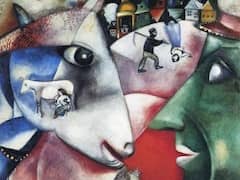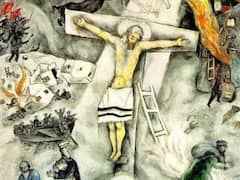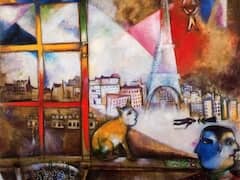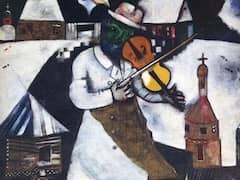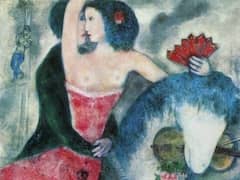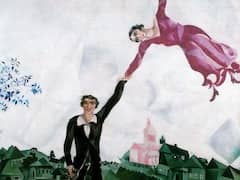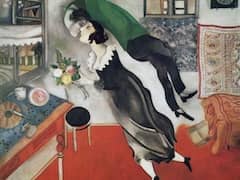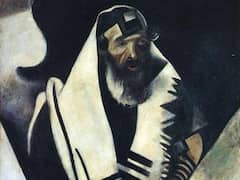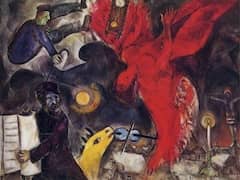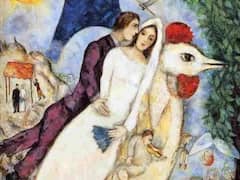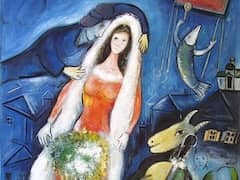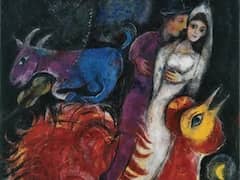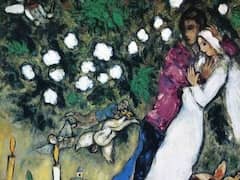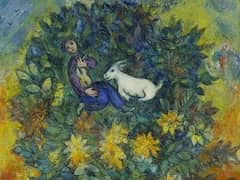The Burning House, 1913 - by Marc Chagall
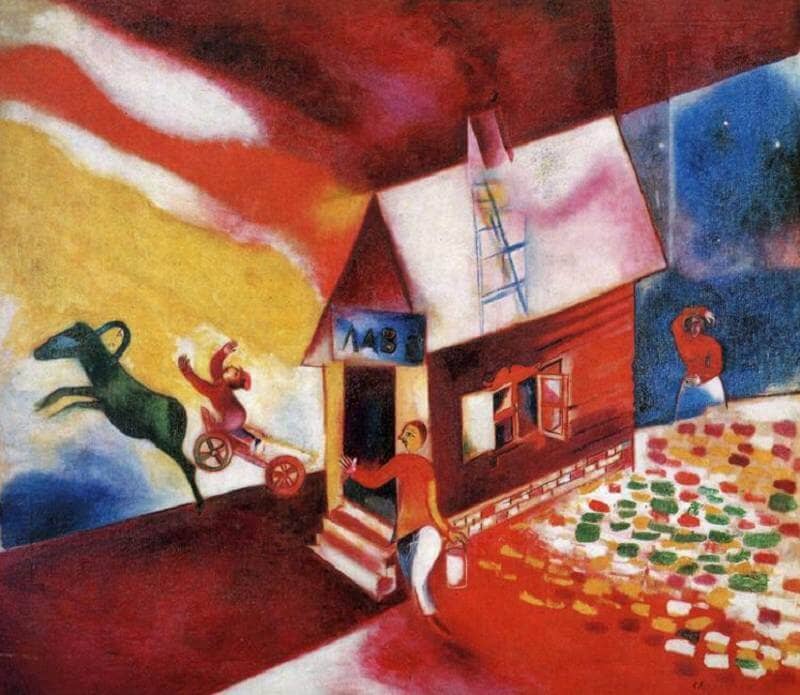
Through the window in The Soldier Drinks appears a landscape painted in peculiarly fiery colors, though it certainly has no symbolic bearing on the soldier's background. Instead, the blaze of color serves as a contrast to the predominantly cool color scheme and gives a richer modulation of color-light. Yet, that fiery landscape seems to have sparked off a poetical idea in Chagall, for he returned to it a year later in the Burning House.
It is an unusual picture, with a formal structure of contrasting planes that allows various interpretations. At the center, delineated in simple Cubistic abbreviation, is an apparently solidly constructed house, whose rafters can nevertheless be seen through the roof. It stands capping a hill at the edge of a precipice, so it seems, and makes a sharp silhouette against the blazing sky; its position is secured by a broad dark-red track which draws a hard line in front of the abyss. To the right the easy gradient of the hillcrest broadens into a checkered plain. Behind this, as a separate surface plane, rises a segment of starry firmament, cool and transparent, curtaining off the sinister glow of the sky. There a woman appears like a rising moon and gazes searchingly toward the house. To the left the heavens are bursting wide open. In quick escalation from dark red-violet through burning red and smoky white to sharp yellow, the color passages sweep like sheaves of flame across the heavenly zone and even seem to be bursting out of the house, yet without doing it any damage. A green horse with a cart, in which sits an ecstatically gesticulating peasant, leaps into the fiery glare. Who is he - some rural Elijah soaring up into the heavenly radiance, or someone plunging into the abyss following a catastrophe? A man rushes out of the threatened house and points with a startled gesture at this scene as he flees, carrying off his belongings in a container.

